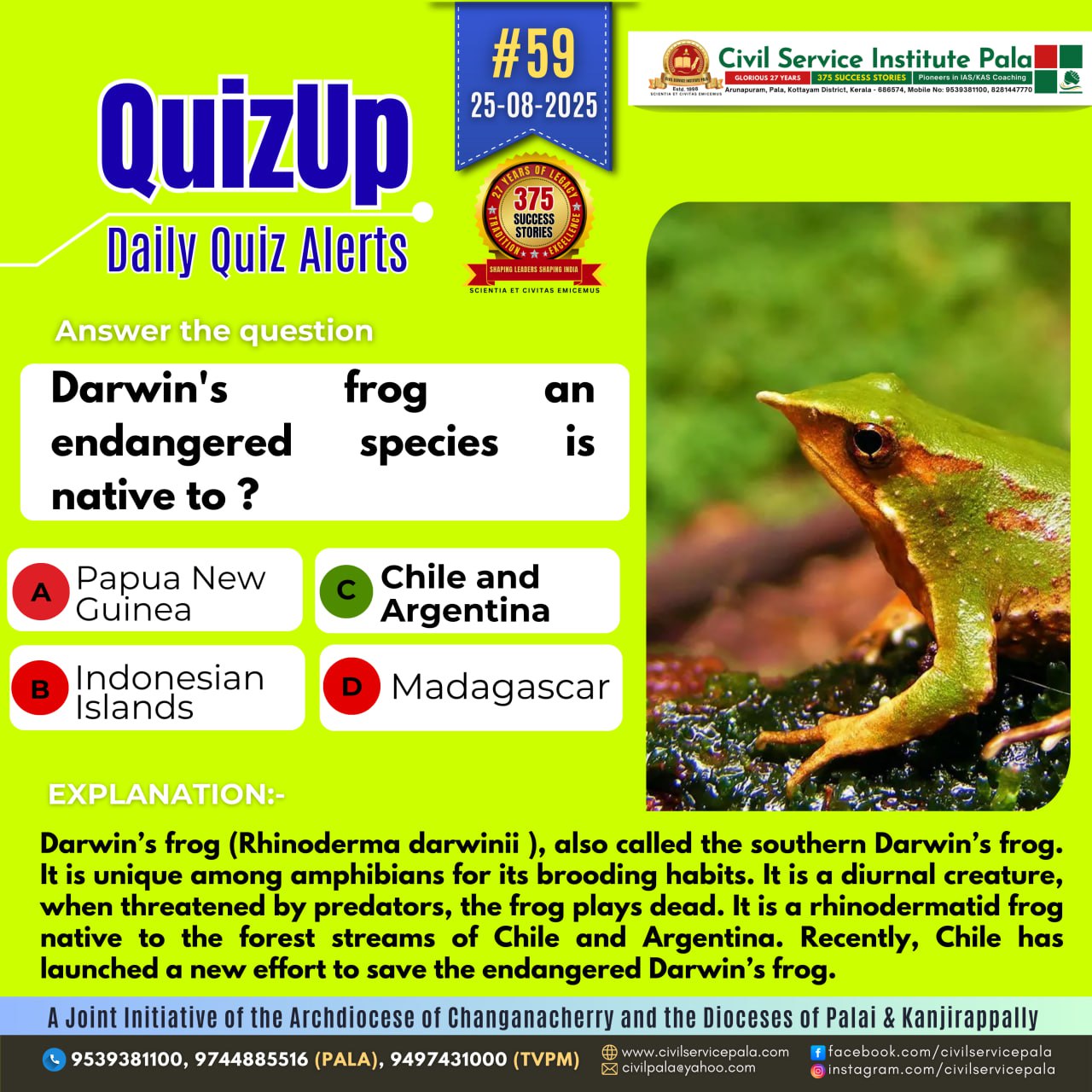
Darwin’s Frog
Darwin’s Frog (Rhinoderma darwinii & Rhinoderma rufum)
Habitat: Native to the temperate forests of Chile and Argentina, often living near streams with dense vegetation.
Unique Feature: Famous for its unusual method of parental care. After the female lays eggs, the male guards them until hatching. Then, he swallows the tadpoles and keeps them inside his vocal sac (used for calling). The young develop there until they are fully formed frogs, and then hop out of the father’s mouth. This is called neomelia (mouth-brooding).
🌍 Conservation Status
Rhinoderma darwinii (Southern Darwin’s Frog) → Listed as Endangered by IUCN.
Rhinoderma rufum (Northern Darwin’s Frog) → Considered Critically Endangered, possibly extinct, last seen in 1980.
⚠️ Threats to Survival
Habitat loss: Logging, agriculture, and urban expansion reduce forest and stream habitats.
Chytridiomycosis: A deadly fungal disease (caused by Batrachochytrium dendrobatidis) affecting amphibians worldwide.
Climate change: Alters stream ecosystems and forest cover, making survival harder.
Pollution: Pesticides and fertilizers contaminate water sources.
🛡 Conservation Efforts
Protected areas: Some populations live within national parks in Chile and Argentina.
Captive breeding programs: Zoos and research centers are working to maintain populations and study disease resistance.
Research on chytrid fungus: Monitoring spread and testing possible treatments.
Awareness campaigns: To reduce habitat destruction and promote amphibian conservation.Source:https://www.thehindu.com/sci-tech/energy-and-environment/chile-takes-new-steps-to-save-endangered-darwins-frog/article69878357.ece



